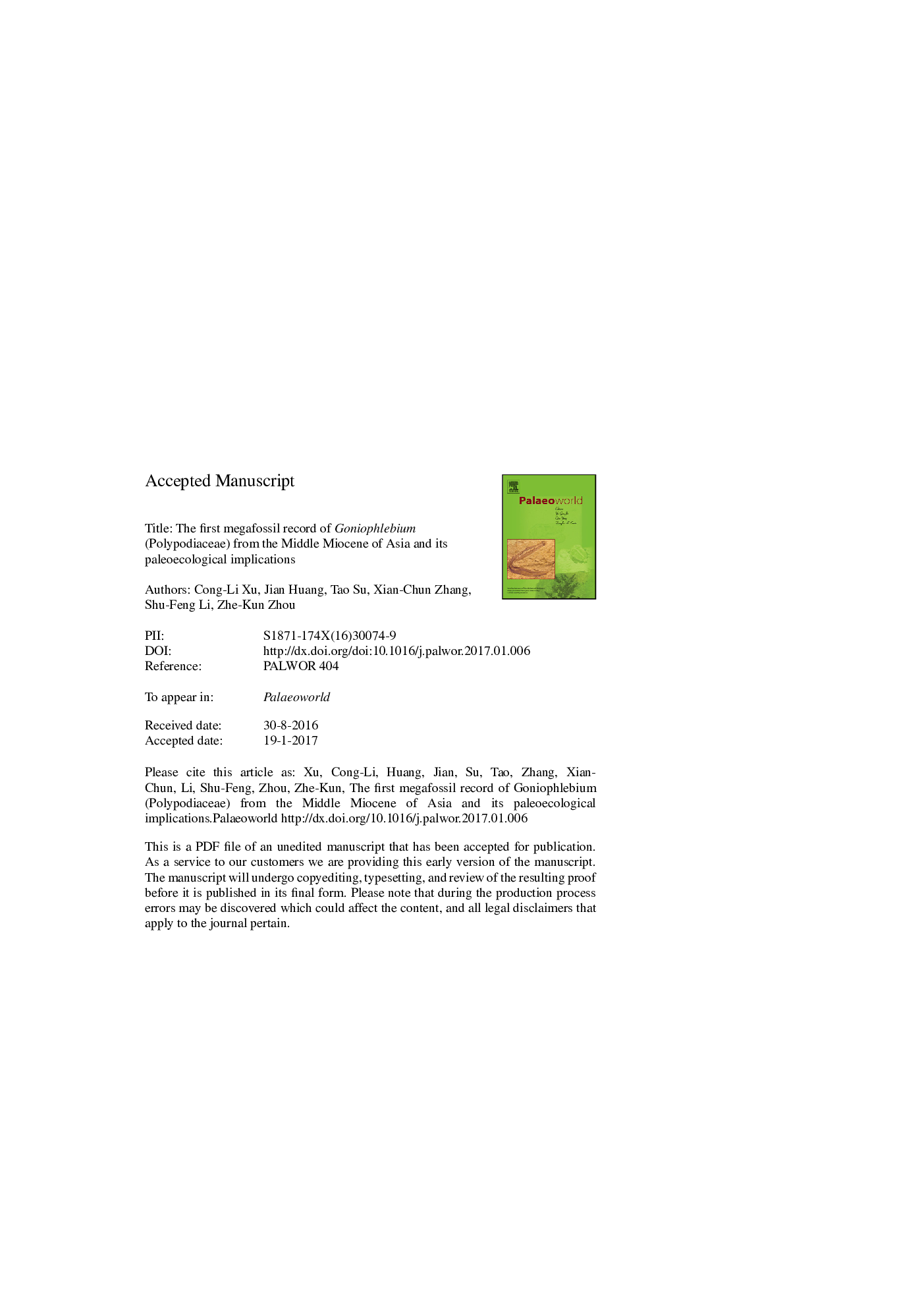| Article ID | Journal | Published Year | Pages | File Type |
|---|---|---|---|---|
| 5788221 | Palaeoworld | 2017 | 23 Pages |
Abstract
The first megafossil record of Goniophlebium macrosorum Xu et Zhou n. sp., is described from the Middle Miocene Climate Optimum (MMCO) (15.2-16.5Â Ma) sediments in Wenshan, southeastern Yunnan, China. The fossils are with well-preserved leaf pinnae and in situ spores, and are represented by pinnatifid fronds and crenate pinna margins, with oval sori almost covering 3/5 area of areolae on each side of the main costa. In situ spores have verrucate outer ornamentation, and are elliptical in polar view and bean-shaped in equatorial view. The venation is characterized by anastomosing veins with simple included veinlets forming 2-3 order pentagonal areolae. All these morphological characters confirm the assignment of this species to the genus Goniophlebium (Polypodiaceae), now is distributed in southeastern Asia to Australia. Among living species, G. macrosorum shows the closest morphological affinity to the extant Goniophlebium subamoenum. The discovery of G. macrosorum suggests that Goniophlebium occurred in this region no later than the Middle Miocene. Moreover, the result of this study is consistent with the paleoenvironment of Wenshan flora as reconstructed in previous research, which concluded that modern evergreen broadleaved forests with complex ecological structure have been possibly established in southwestern China since at least 15Â Ma.
Keywords
Related Topics
Physical Sciences and Engineering
Earth and Planetary Sciences
Palaeontology
Authors
Cong-Li Xu, Jian Huang, Tao Su, Xian-Chun Zhang, Shu-Feng Li, Zhe-Kun Zhou,
